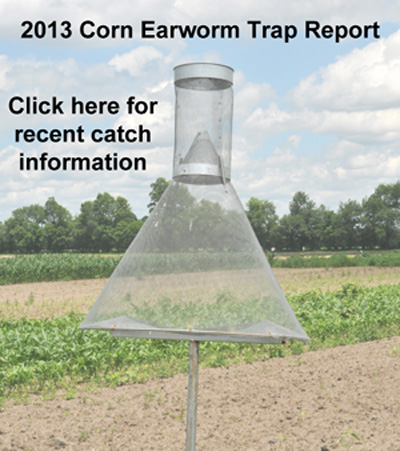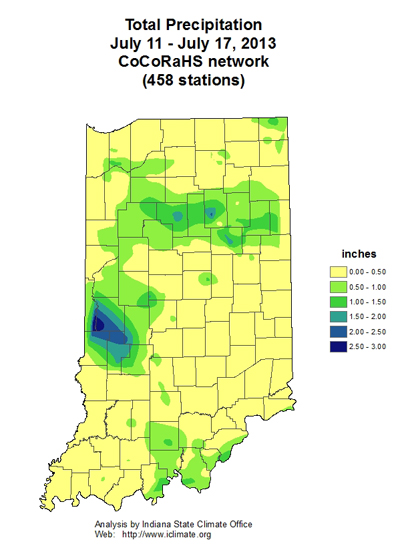USDA-NIFA Extension IPM Grant
Pest & Crop Newsletter, Entomology Extension, Purdue University
Soybean Aphid: Something to Consider in Future Weeks – (Christian Krupke and John Obermeyer)
• Currently, our soybean aphid numbers are at low levels BUT…
• Above threshold levels in Eastern Michigan soybeans are something to watch.
• Treating now will do NOTHING to control aphids that MIGHT arrive in 3 weeks.
• Scouting is the proactive approach to preventing potential damage.
We appreciate the spotty reports of low densities of soybean aphid being found in northern Indiana counties. This confirms what we have seen in our visits to fields, and matches up with the lack of winged aphid movement detected by the soybean aphid suction trap network (including four traps in Indiana). In contrast, Chris Difonzo, Michigan State University field crops entomologist, has just declared an outbreak of soybean aphid in the “thumb” of Michigan. This doesn’t have immediate impact on Hoosier growers, but it is something for consideration in the next few weeks.
Early soybean aphid activity in northern part of soybean-growing regions (i.e. not any of the “I-states”) is a common occurrence, and is directly related to the abundance of buckthorn in those areas, the aphid’s overwintering host. Historically, our soybean aphid outbreaks occur weeks after outbreaks in these northern areas, if they happen at all. In response to overcrowding, a portion of the soybean aphids will produce wings in order to migrate and infest low-density fields. Soybean aphids fly up into the jetstream, where they are passively carried along for great distances, including to other states. Should prevailing winds, or storms, “rain” aphids into Indiana, and environmental conditions are hospitable (75-85°F) and without heavy, pounding rains, our populations could surge. The time to really be vigilant will be the end of July and first 2 weeks of August, a key period for soybean pod development.
The populations building in areas north of us does suggest that scouting should commence. Use the 250-aphid/plant threshold. There are some non-data based claims out there that recommend growers treat when levels are as low 10 aphids per plant on R-stage beans! If our soybeans were that sensitive we would be in big trouble, every year. This ultra-low threshold is based on some convoluted logic that includes aphids continuously doubling every day and being reproductively mature instantly. This is pure fiction and not based on any science. Stick with what works and what has the statistical support of years of research across the Midwest. Use the 250 aphids/plant threshold and spray when necessary. Soybean aphids are still easy to manage – we have many registered products that are effective. Spraying when it is not necessary not only wastes time, money and product, more importantly it can reduce the longevity of these compounds - aphids are among the most likely pests to develop insecticide resistance.
In summary, no big Indiana outbreaks yet and very hot weather will keep them down. But we will keep watching the situation as it develops over the next several weeks. Stay tuned, and Happy Scouting!
Rootworm damaged roots, a rare find of recent in Indiana
![]()
![]()
Click here to see the Black Light Trap Catch Report
![]()
Western Bean Cutworm Adult Pheromone Trap Report
![]()
VIDEO: Identifying Palmer Amaranth in The Field - (Bill Johnson and Travis Legleiter) -
This video was shot near Twelve Mile, IN (Cass County) on July 11, at a field heavily infested with Palmer Amaranth. This location allowed us to capture the various growth stages and identifying characteristics of this very aggressive weed. We encourage you to view this video in order to distinguish Palmer from other pigweed species, especially common water hemp. If you think you have found an infestation of Palmer Amaranth in Indiana, take multiple, in-focus, photos of the plant’s characteristics outlined in this video along with location information and email to Bill Johnson (wgj@purdue.edu) or Travis Legleiter (tlegleit@purdue.edu). This will help us assess and share the extent of this weed’s presence in the state.
Click on the video to watch.
![]()





